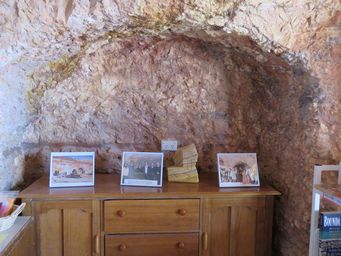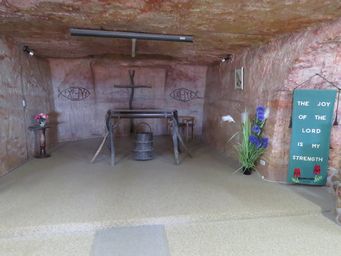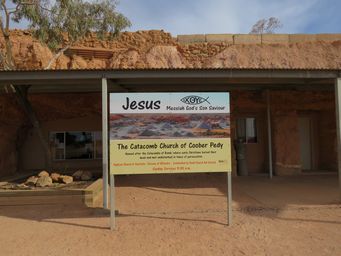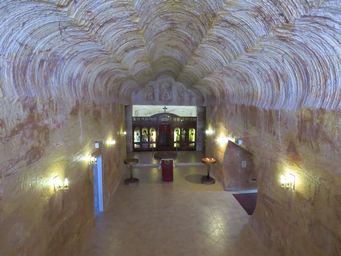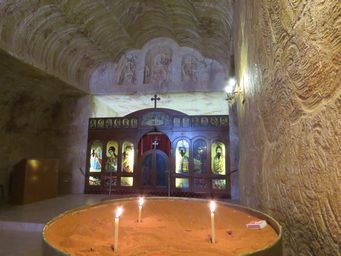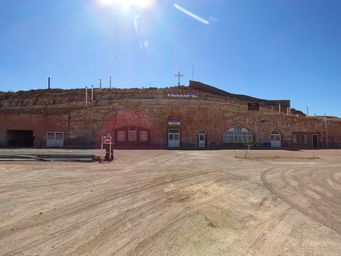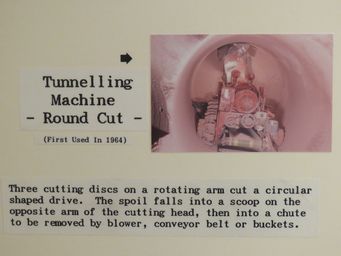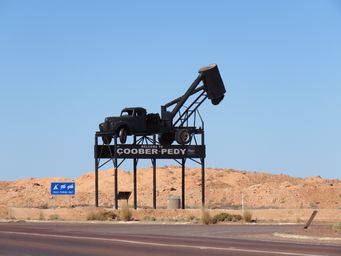
Australia So Much to See
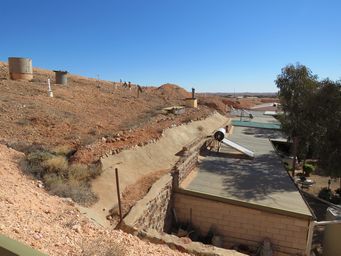
What is an opal? Gem Story defines an opal as "Non crystallised minerals made by silicon dioxide combined with water". It takes five to six million years to form an opal one centimetre across. Each opal is unique, and differs in colours and patterns. Even colours in an opal can vary in different lights. Opal is the national gem stone of Australia.
Three main types of
opal are found in Australia. White opal has a milky background and a pearly appearance. This is the most common and is
found around Coober Pedy, Andamooka and White Cliffs. Boulder opal is named from the way it has formed naturally
in an ironstone rock. These are found mainly in Queensland in areas including Quilpie, Winton, Yowah, Toompine and Eromanga.
Black opal has a black background, and against the vivid colours, it is the most beautiful and valuable of all opals. The Lightning
Ridge area is the only place in the world where black opal is found.
The South Australia towns of Coober Pedy, Andamooka and Mintabie
produce 85% of the world’s opal supplies.
The population of Coober Pedy is around 40% Aboriginal, with 45% different nationalities comprising the rest. 50% of the people
of Coober Pedy live in dugouts, cut into solid sandstone. The firm sandstone needs no reinforcement, as solid walls and ceilings remain
after excavation.
We visited one of the opal stores, and met owner Stella. Her story may represent the lives of many in Coober Pedy. Stella came from Greece to Sydney in 1964, and met the man she married when he also came from Greece. They chose to go to the Coober Pedy opal fields in 1973, at first living on an old bus with no windows, and without running water or electricity, while George spent very long days trying to find the elusive valuable opals.
With two young children Stella opened a shop at first painting
on small pieces and selling them for a few dollars, she learned to cut and polish opals and make jewellery, so value adding to the
opals George found. Their son trained to be a jeweller and now works in their store, Opalios, while George spends shorter days
out digging. Most opals in the store are local, and Stella will tell you when each was found.
Grades of opal jewellery
consist of three main presentations, with prices also based on colour as not all opals have the highly prized light refraction that
creates the colours. In fact 85% of the opals uncovered in Coober Pedy are what they call potch, which is considered worthless.
Solid opal is the most expensive to buy, while to make a more affordable product, some opal is sliced and a doublet created
where the opal slice is bonded to a black potch backing. A triplet is a thinner slice of opal, again on a backing, and the front
covered with a clear domed cap. Small pieces of opal can also be set in silicon to create jewellery.
Opal has a
hardness of 5.5, approximately the same as glass. It is not suitable for full time wear, needs gentle cleaning to avoid abrasion.
Opal shops and displays are numerous in Coober Pedy, and many are listed on Coober Pedy .com
Photos: Above right George working earth moving machinery on his claim.
Centre right noodling in the Coober Pedy public area, where anyone
can dig through the old mullock heaps on the in town areas that was mined as "The Jewellers Shop".
At right a few chips of opal
including potch, with a colourful find lower right of photo.
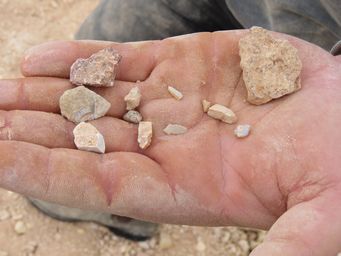
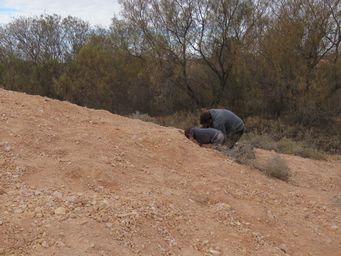
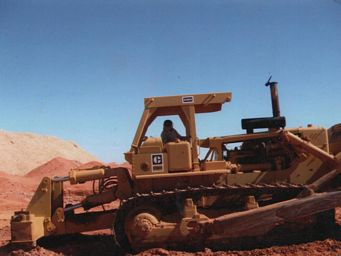
There are four underground churches in Coober Pedy.
St Peter and St Paul’s Catholic Church is a heritage listed building
as the first underground church in Coober Pedy, carved out in 1965.
The Catacomb Anglican Church (above and at right) was developed from an old dug-out and made in the shape of a cross, opened in 1977. The lectern, cross and communion table are made for local mulga wood and recycled timber from an old miner’s winch (at right). This simply decorated church has far more spirit than a heavily adorned and decorated church.
The Revival Fellowship Church was
built in 1989 in part of a former opal mine.
The Serbian Orthodox Church, created in 1993, is magnificent. Carved with a circular cutting implement as shown below right,
the celling has been cleverly designed to create a look of beauty giving a feeling of tranquillity.
